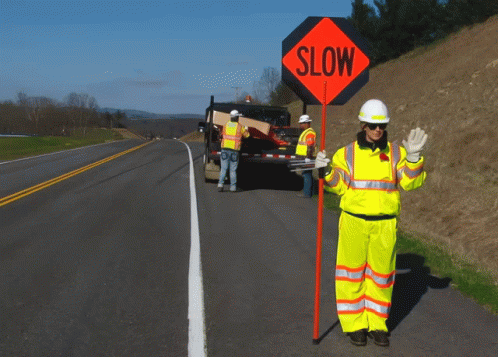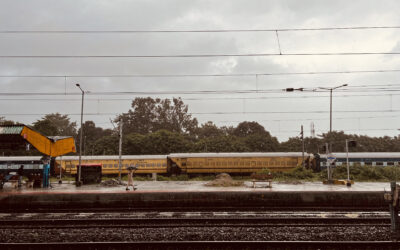It’s been almost 18 months since I started identifying myself as an India Fellow. It’s been 18 exciting months of having to do something that I have never done before. And putting myself in roles that would have otherwise made me nervous.
I can’t help but look back at the beginning of all this – the Induction! At different times during induction, the alumnus and programme team spoke about having to conduct village meetings. I remember thinking that’s something that I would never do. The thought of having to facilitate meetings and that too in a language I have no idea about terrified me. 6 months into the fellowship I was doing exactly the same thing that I thought I won’t be doing.
I learned about conducting village/community meetings through the feedback I received from everyone around me. At times the feedback was in the form of yawnings and low turn-up. At times, my colleagues gave me direct inputs on how I conducted a meeting.
Here’s a non-exhaustive list to keep in mind while you prepare for your first village meeting.
1. Don’t jump in. Slow down a bit.

It is perfectly possible that you would want to conduct a village meeting as soon as you reach the field location. Hold on to the urge. The community you are going to interact with is new to you. Their ways of listening and understanding, their language, their power dynamics, their timings – everything is new. Instead, accompany your colleague from the community during these meetings. They are a storehouse of skills when it comes to communicating with the community. They may not tell you how to do it but they will definitely show you!
2. There is no one right way of mobilising the villagers

Village meetings are part of the work for us. But not for the community as they have to change their schedules to be there for the meeting.
There is never one way of mobilizing the community. Once I understood this, I was excited to try different ways to bring people together for meetings. In my very first meeting in Tadadei village, I called out in a loud voice (read, shouted). “Baapa maane maa maane, tike eeyade asso..” (Fathers and mothers, please come here). Only a drum was missing.
We started off the meeting using a fun game. It worked like magic! So, with full confidence, I replicated the same thing in another village, Kuttrumali. To my surprise, the response was not that great. In fact, when we insisted that they take part in the game, most women ran off. As I stood there confused, Lanji, one of my colleagues came to my rescue. He spoke in a low voice to me, “Didi, sab log darri jaochi.” (Sister, everyone is afraid)
Another important aspect to keep in mind is what method we use to mobilize. The method should depend on whom we want to interact with. On the occasion of Ambedkar Jayanti, my colleague and I used drums and loud announcements in the hope of calling the youth for the meeting. Instead, we were met with an army of little boys and girls who got excited with all the sound. That was yet another lesson for me.
3. On an equal footing

There are chances that sometimes we feel that we know more than the community. And this attitude will definitely reflect in our interactions and the ways in which we treat our community. As we put ourselves on a higher pedestal in our minds. It would take a couple of experiences to humble us to see the fallacy in this thought.
At the India Fellow induction training, we spoke in detail about the difficulty of finding our place in the (community) circle. I had a first-hand experience with it. The villagers might smile and nod to everything you say but winning their trust and finding your place in the circle takes time and effort. If we carry the mindset to think of the relationship we have with the community as that of givers and receivers, it will only make it more difficult.
4. Your time is not theirs

If you have to meet the working adults, go before 8 am or go after 6 pm as they would leave for their donger kaam early in the morning and come back late. And if the plan is to meet with adult men, the morning is better as they would be drunk in the evening. If you are to meet children above 5 or 6 years old, the daytime is better. If it’s under-five children, go early in the morning, as their parents would take them along for work.
Whenever we plan a meeting, it’s good to keep the audience at the center while deciding the time. Refrain from using a time when it is convenient for us. Pay attention to which month it is, what porva (festival) is happening that month and whether there is a mela that week. Get to know if there is a wedding/funeral happening- not just in that village but nearby villages too. Check if it’s the donger/ sowing/ cultivating/ harvesting season. And if its non-farm season then when does the NREGA work start.
It’s a bonus if we know the time around which the men and women go bathing in the river or for collecting water. There are high chance that you will not find people in the villages around these times.
5. No information dumping

It is very much possible for us to get excited and enthusiastic for our first few meetings. We would read up all sorts of materials and be well prepared to able to write a 5-page article. When D-day comes, and you see a large group eagerly waiting to listen to you, a combination of nervousness and excitement, you would find yourself stopping only after a long monologue of 15-20 minutes to find half of them have left and the other half yawning. At least, that’s how it went for me.
When speaking with the community, it’s good to analyze the type of meeting we are going to have. If the intention is to build their understanding of an issue/build on their knowledge, it is good to break down the meeting into smaller sessions spanning over weeks. Taking these sessions by means of discussions, making them interactive for the community to open up about their experiences/ journeys/thoughts, and building on them achieves the intention better than a long monologue. Or if the intention is training, using activities and opportunities for them to practically try is better.
6. Visuals always help

It’s a game-changer! Regardless of whether the majority of the community is literate or illiterate, having a visual element has helped in the meetings. Either write on walls with chalks/ carry a small blackboard. Don’t worry if you are not an artist, a decent picture that conveys what we want to say works just well! Printed materials, videos, and posters also work.
7. There’s nothing to lose

This is more like a reminder to myself. If you are like me, you might feel nervous when you have to try something before a group. And terribly fail at it. It takes confidence and courage to be able to do it and get laughed at. In the process of learning the ways of our community, if we are laughed at, it is really okay.
In more than one instance, I have seen people laughing at me. But they have also shown me how it is done the right way. Learning to speak their local dialect, learning to match their dance steps, carrying the firewood, trying the local food, bathing the way they do, all might be some things you would try. And while doing all of this, you sometimes end up looking like a clown.
It shows the community that you are ready to show your vulnerability. Instead of trying to hold an image of ‘doing it all the right way always’, loosening up a bit. Showing that you are also a learner has helped. It has opened my doors to many informal groups in the villages.
8. Language is key

As much as we want to facilitate the meeting, know when to step aside. Some things are better conveyed in the local dialects. There are certain things the community would open up about if you speak their language. There are a few ways I used to work around it.
Translating the content and preparing a local colleague had been very helpful, instead of live translation. Recording the meeting with the community’s consent and going back to it after the meeting to make sure you haven’t missed out on any aspect can also be helpful.
If you have anything to add to the list, tell me in the comments.




0 Comments